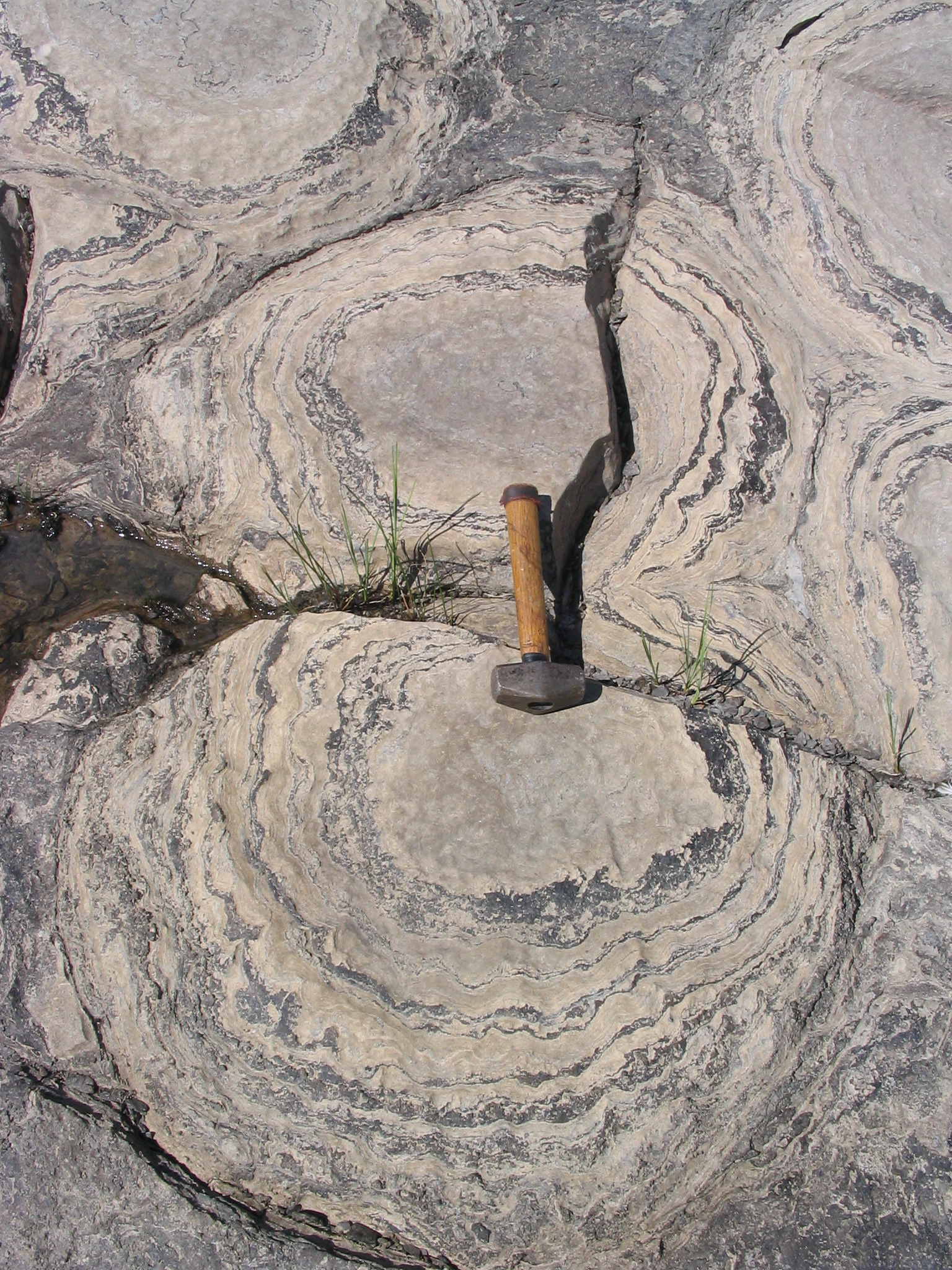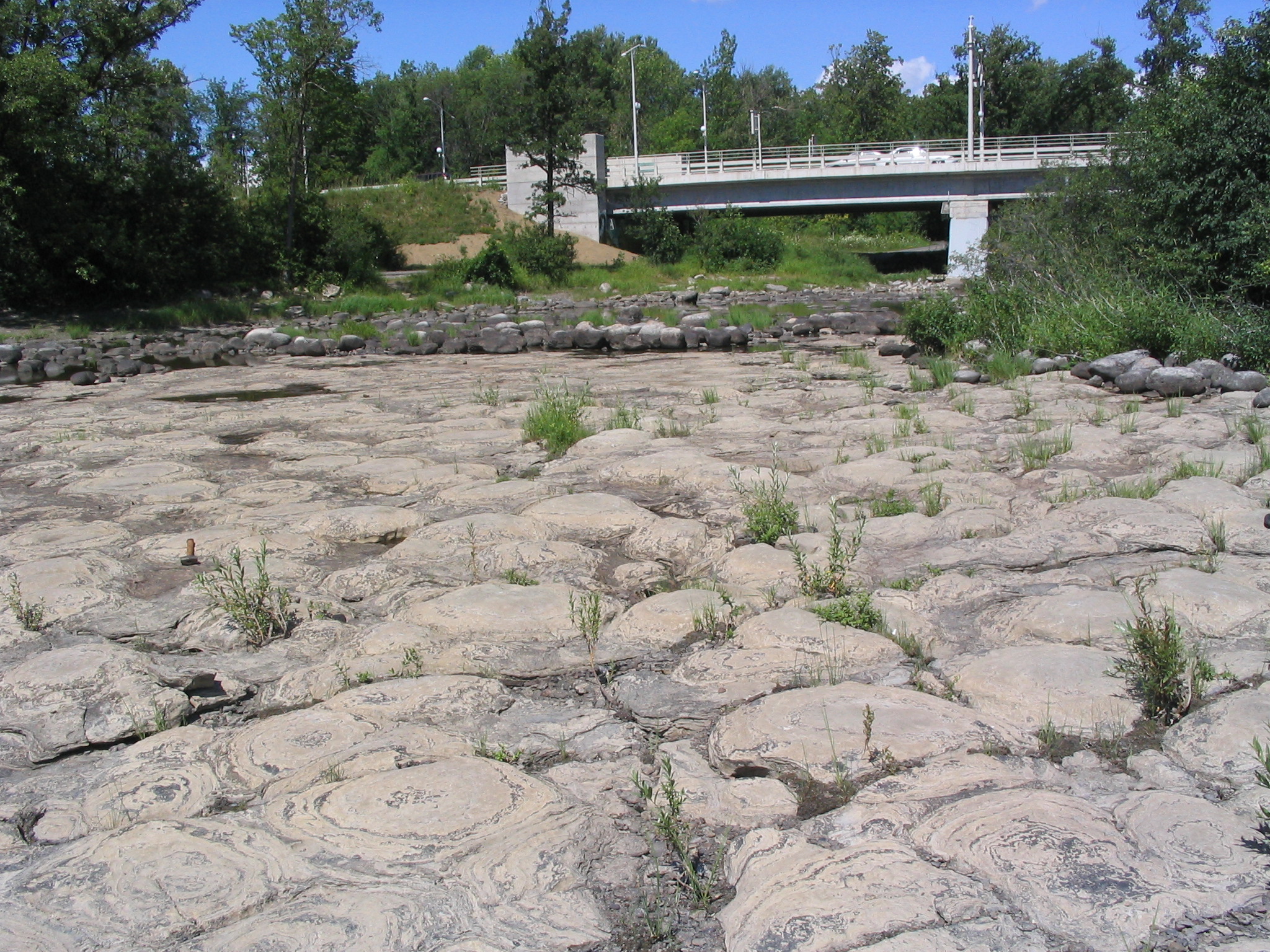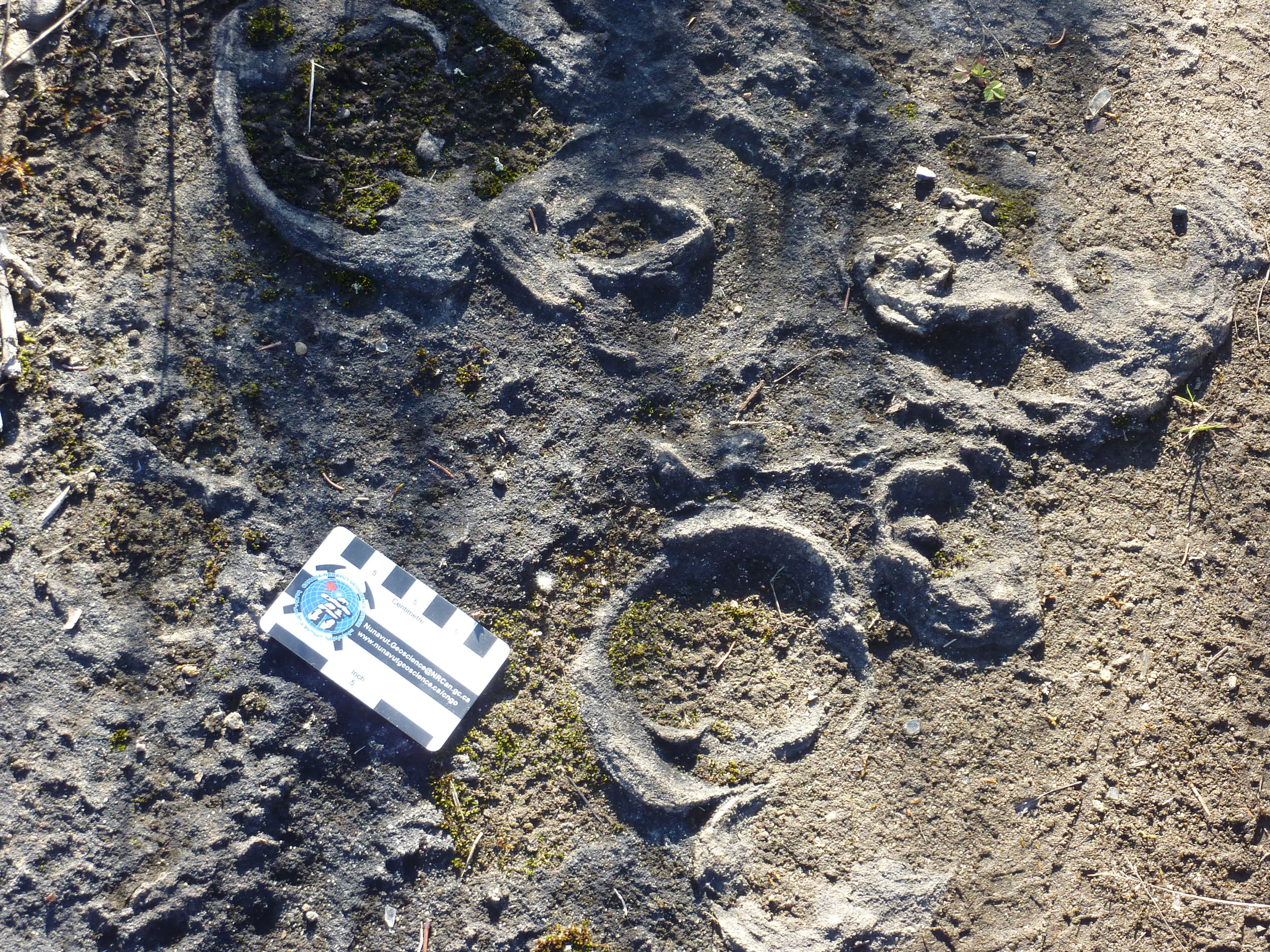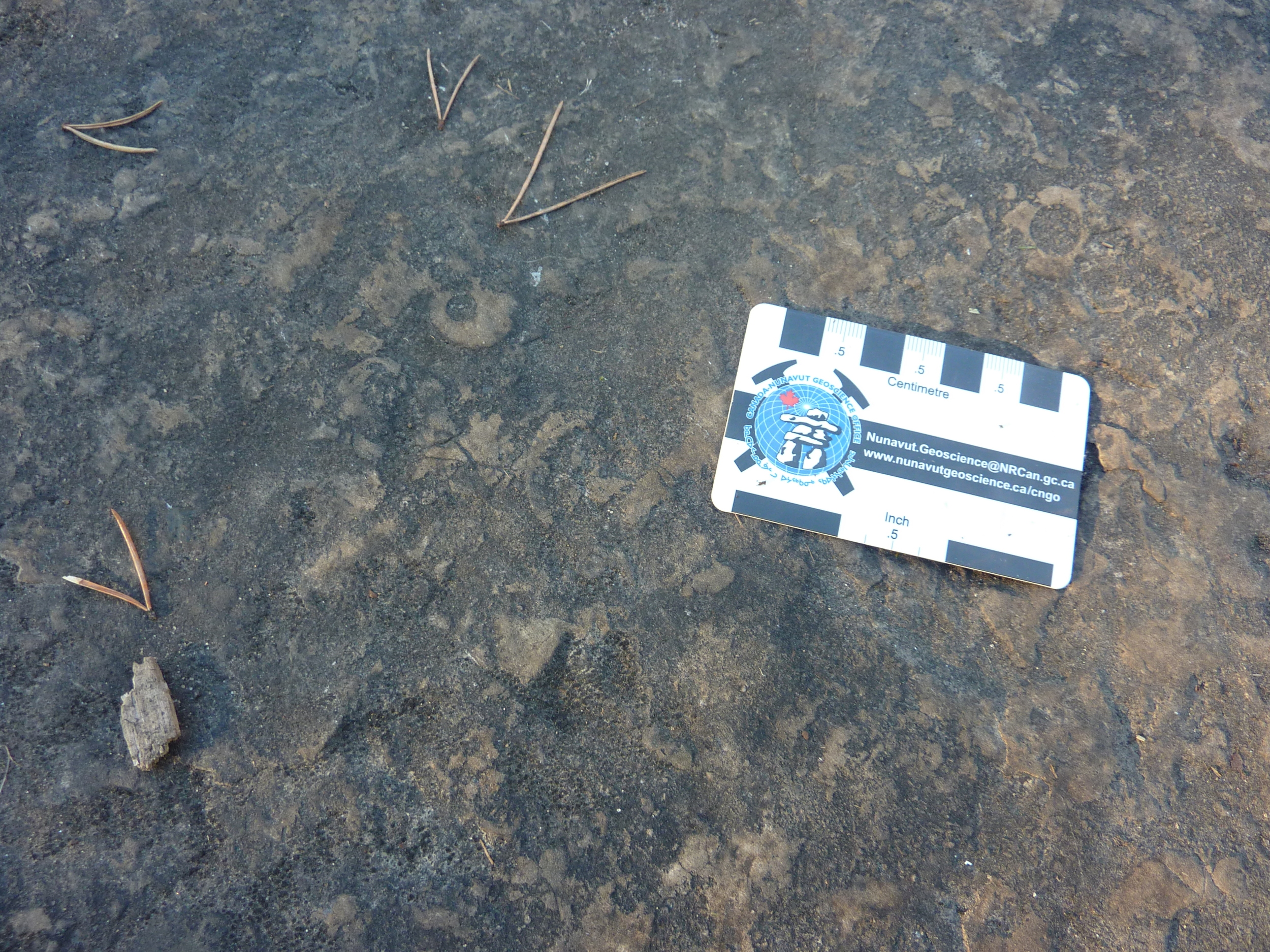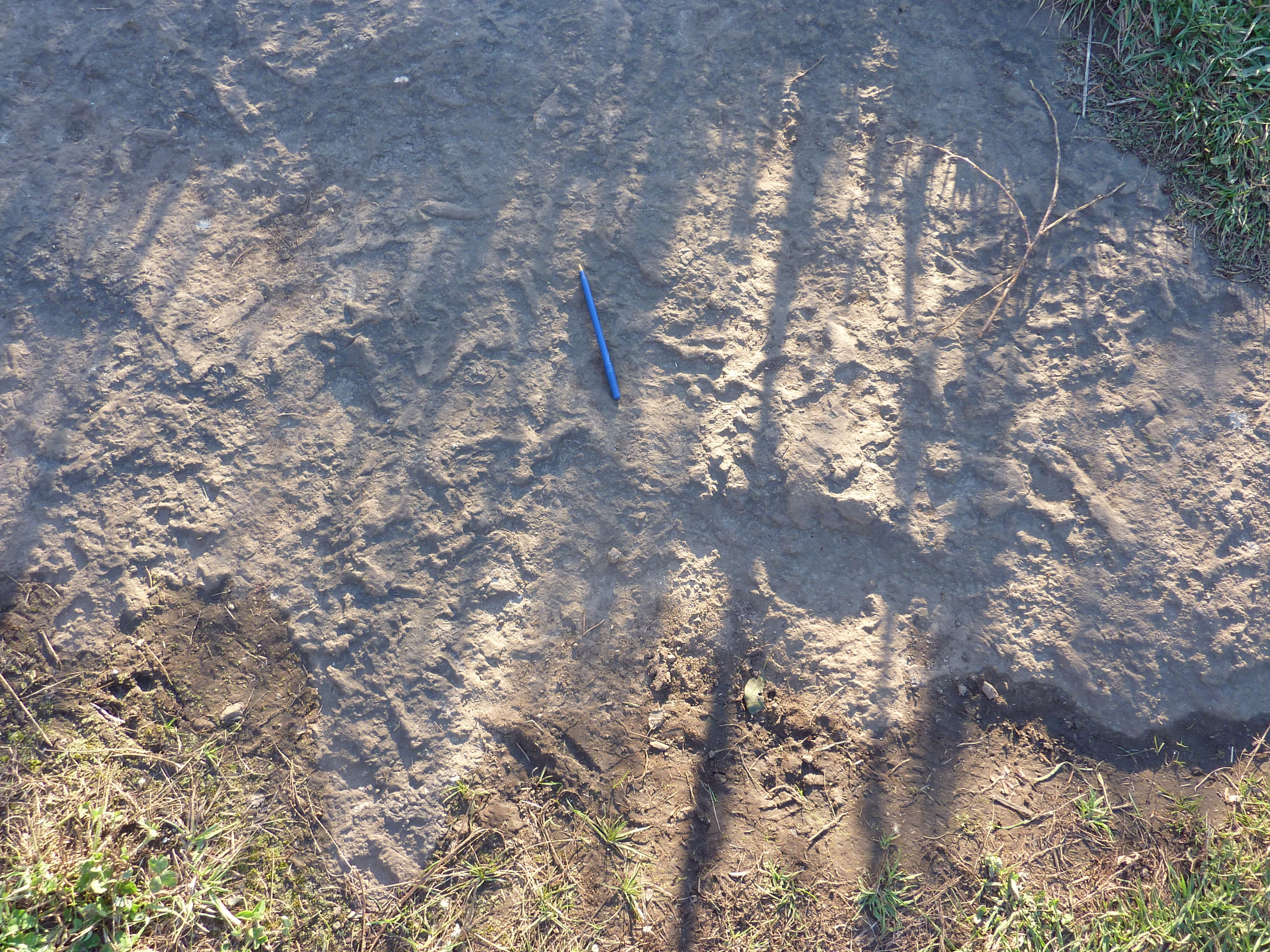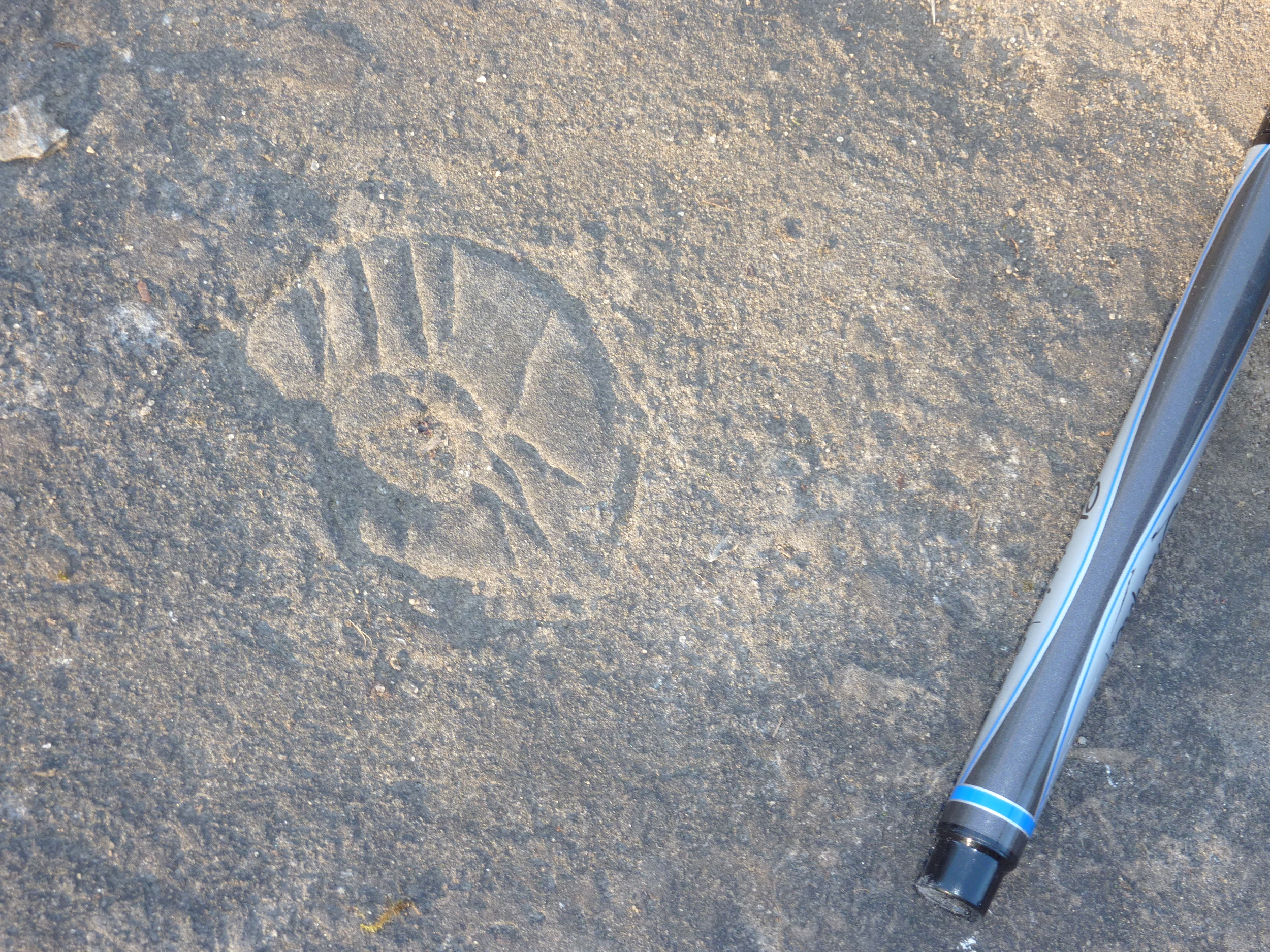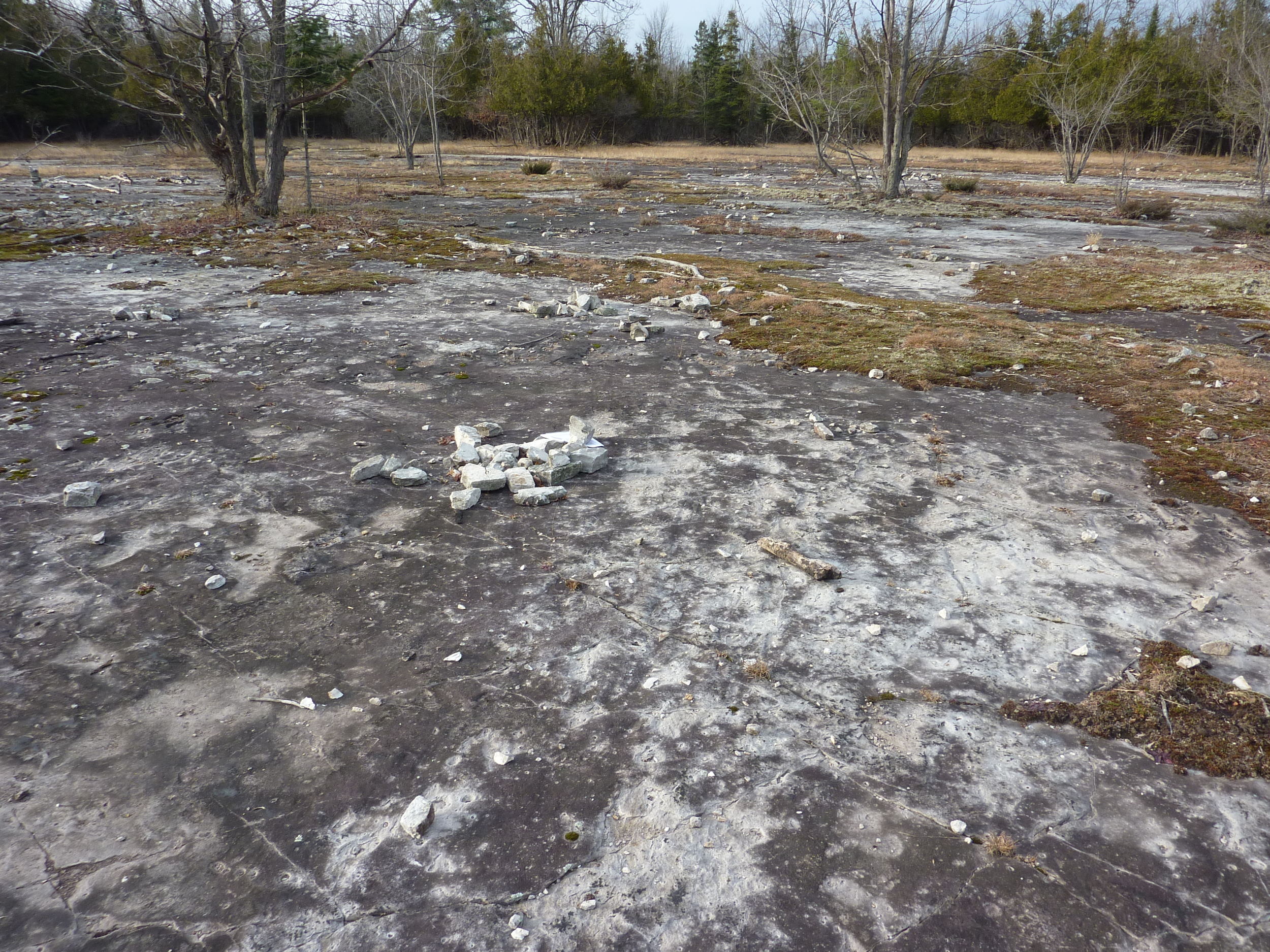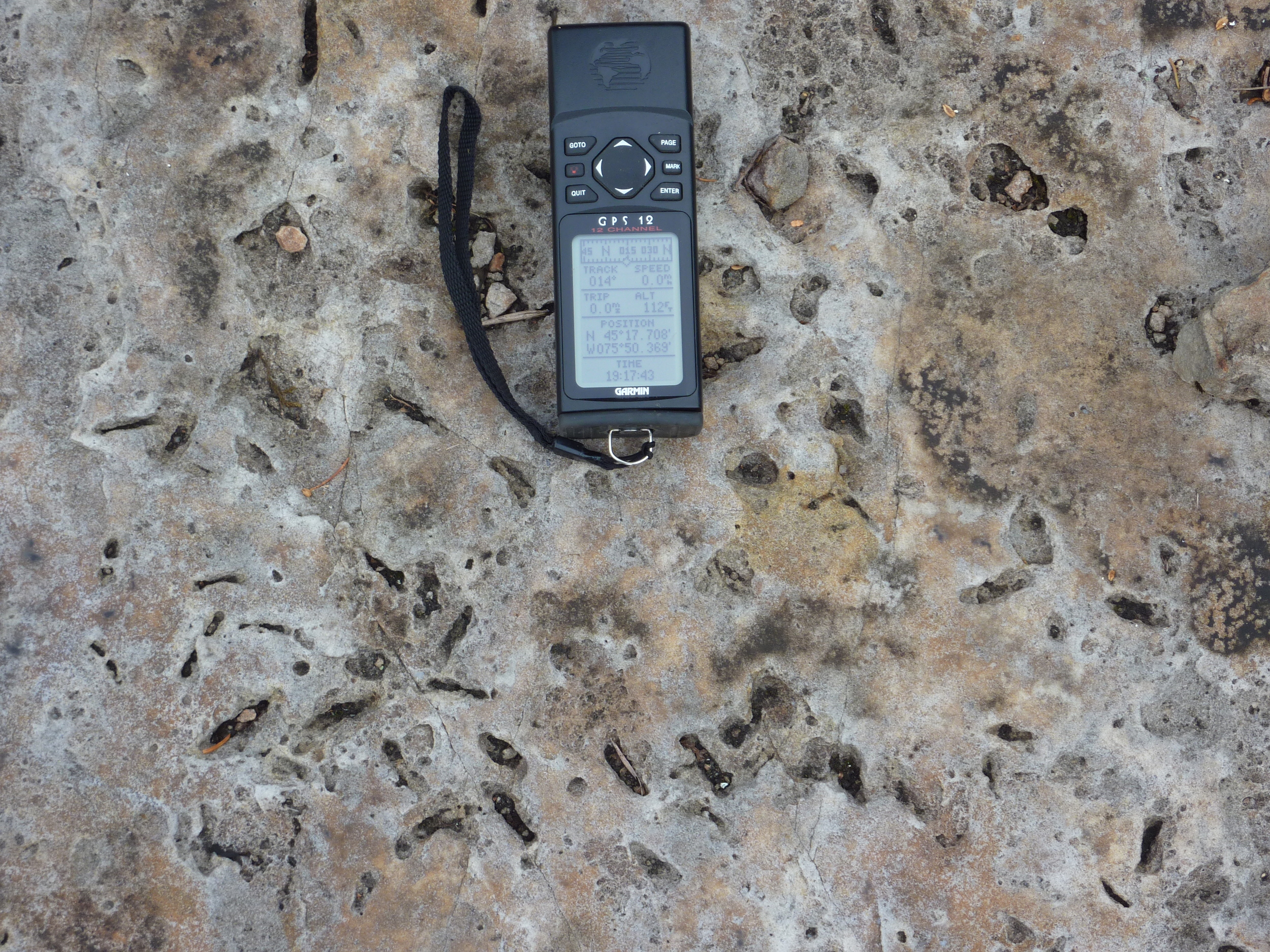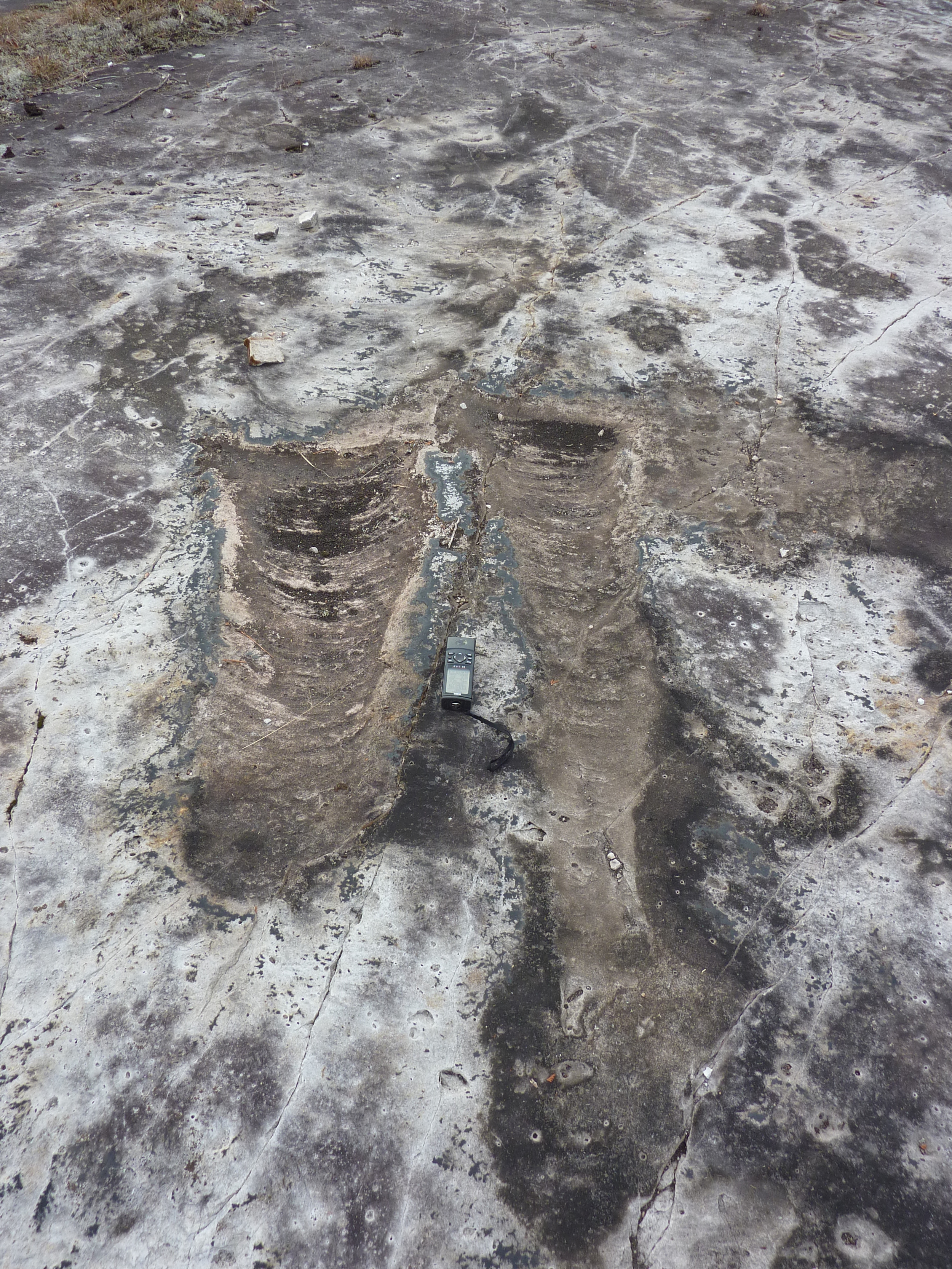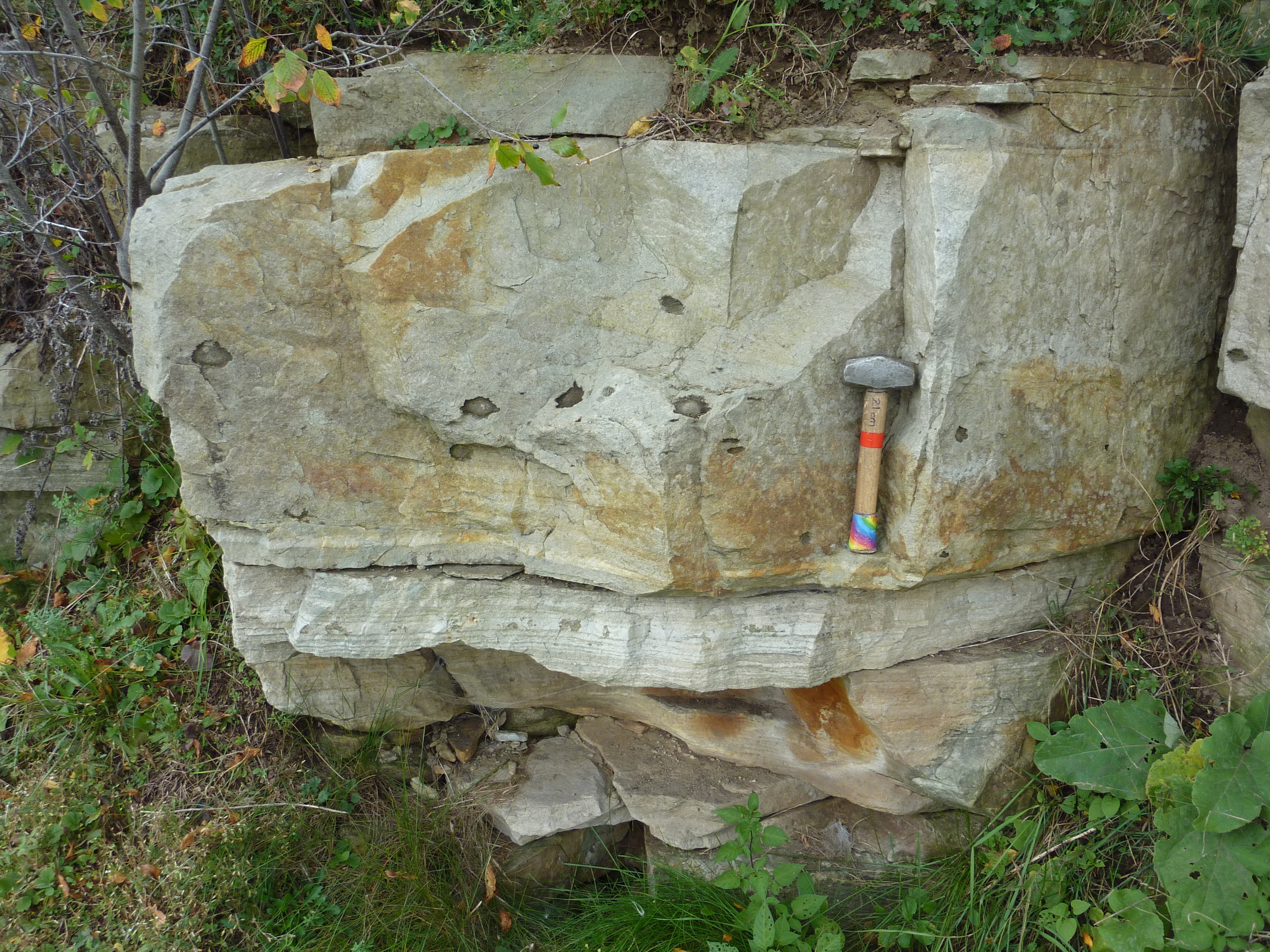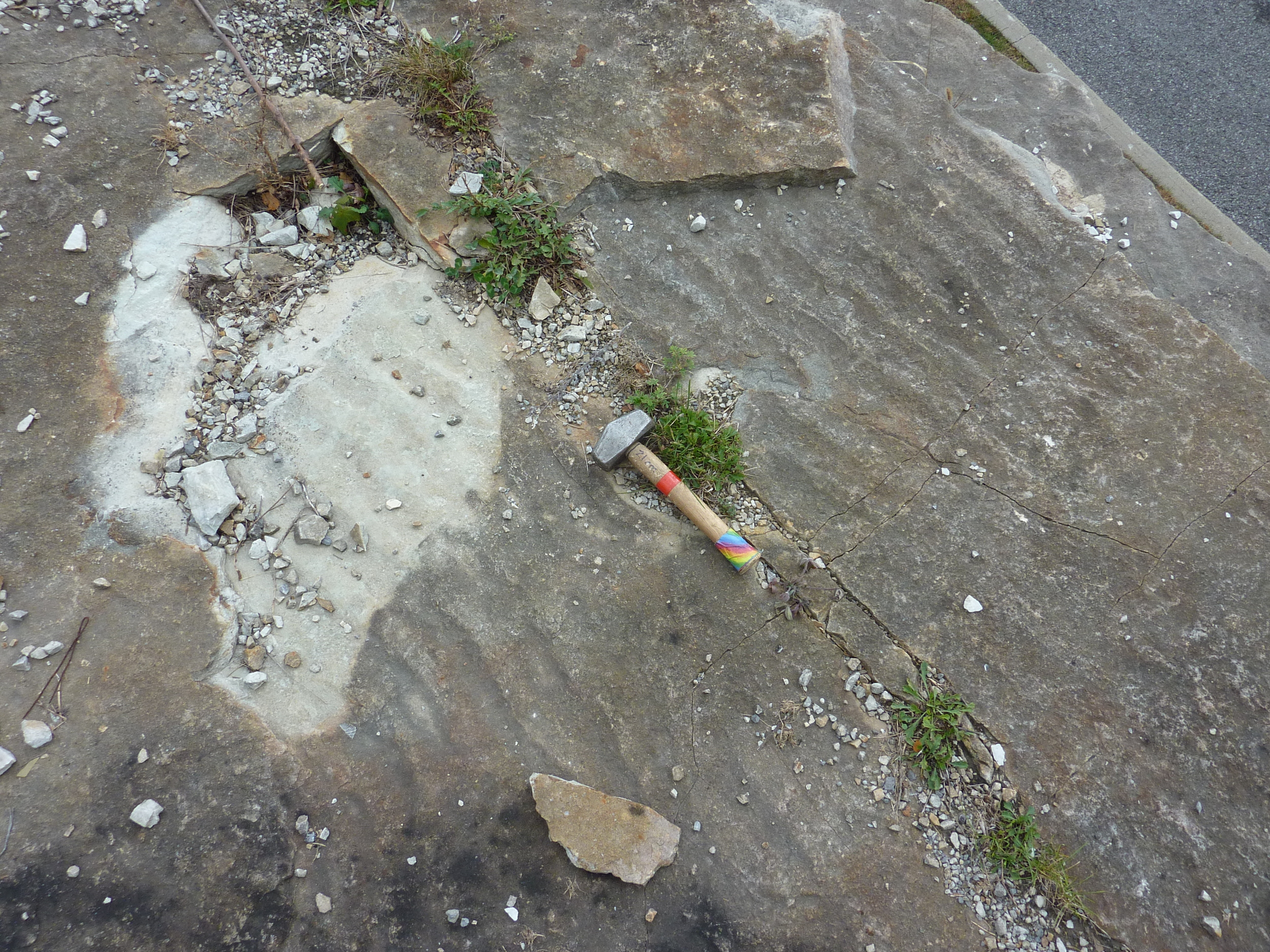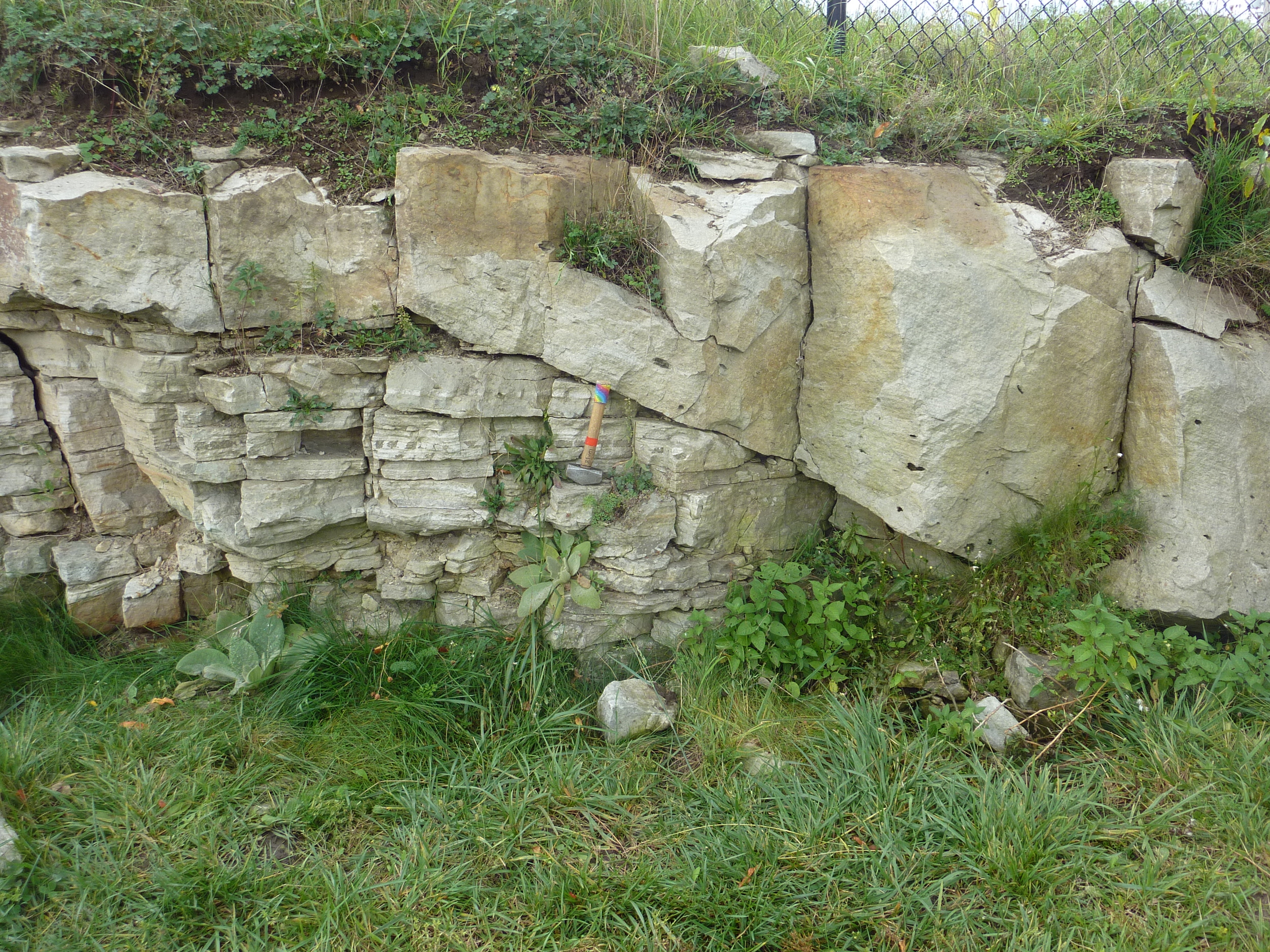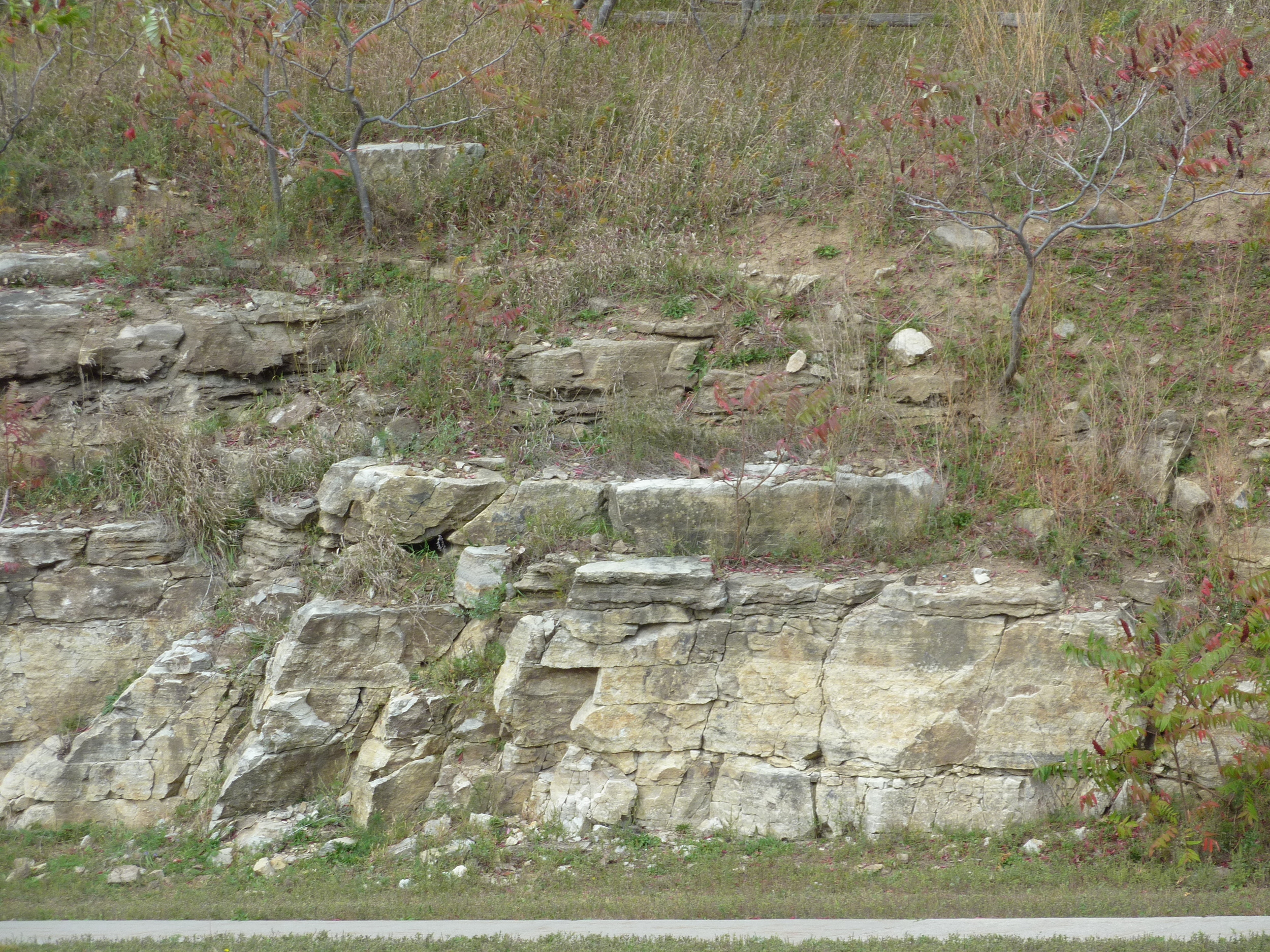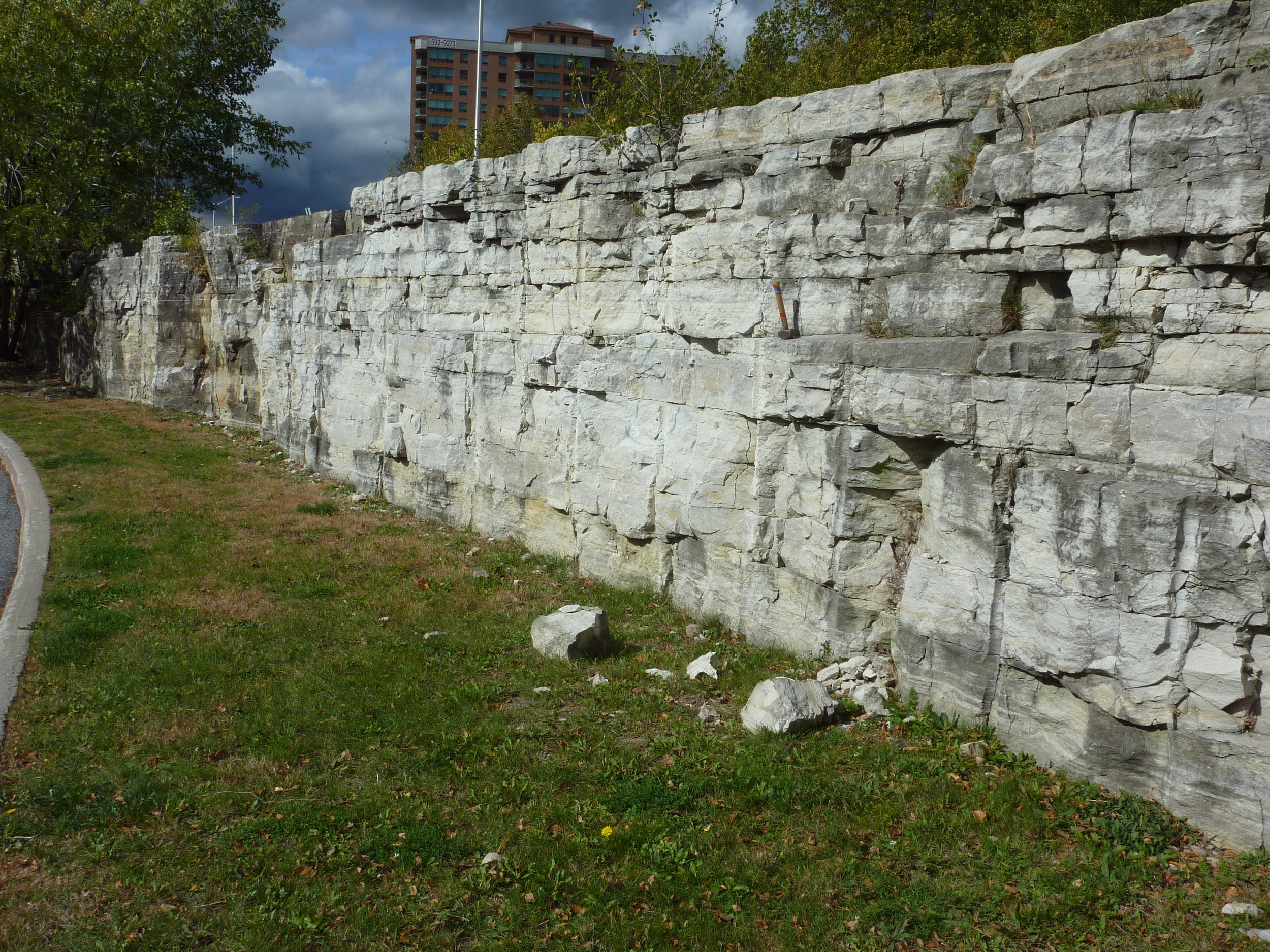Note: only accessible during times of low water level of the Ottawa River.
The section of the Ottawa River between Pembroke and Ottawa offers the most easily accessible displays of stromatolites in Canada. Stromatolites are biosedimentary structures built up during sedimentation by cyanobacteria. Through their life processes, such as photosynthesis, cyanobacteria were likely responsible for transforming the Earth's initially reducing atmosphere (oxygen-poor) to its present oxygen-rich state. Layers were built up as the cyanobacteria grew up through the successive depositions of sediment to create rounded, domed structures.
Although they were the predominant life form on Earth for over 2 billion years, stromatolites now live in abundance in only a few localities worldwide. One of these places is Shark Bay, Australia, where hypersaline conditions (more than 3 times the salt content of normal marine water) present an essentially scavenger-free environment that has enabled stromatolites to develop in profusion in subtidal, intertidal and supratidal zones.
The most spectacular place to view stromatolites can be found less than 100 m upstream from Champlain Bridge. (Go to the first parking lot, west of the bridge, on Boulevard Lucerne /Lower Aylmer Rd.) During low water stages at this site (generally from mid-August to October), a platform of continuous exposure exceeds an area of more than 1500 m2. These stromatolites are arrayed in parallel, locally coalesced north-south lines. Some patches of smaller stromatolites show a distinct east-west elongation, and this, together with associated ripple marks, suggests the influence of longshore currents in a shallow-water warm saline environment, about 460 million years ago. The planar bedding-parallel surface in which concentric laminations of the stromatolites are well displayed was at first thought to be a glaciated surface, but discovery of desiccation patterns on such surfaces and salt casts in some stromatolites indicates a stressed environment. Although abundant in the underlying beds, gastropods are extremely rare in the Champlain Bridge stromatolite biostrome, suggesting that paucity of grazers allowed prolific stromatolite growth, probably in a hypersaline environment. Outward stellate patterns on many biofilm surfaces may have been created by the growth of evaporite crystals before lithification of the biofilm-trapped lime muds.
Boulders of Precambrian granite and gneiss scattered on the limestone surface are glacial erratics from the last glaciation.
(Note: Cross-sectional views of stromatolites can be seen at Westboro Beach and in the rock wall of the nearby OC Transitway west of Churchill Ave.)

